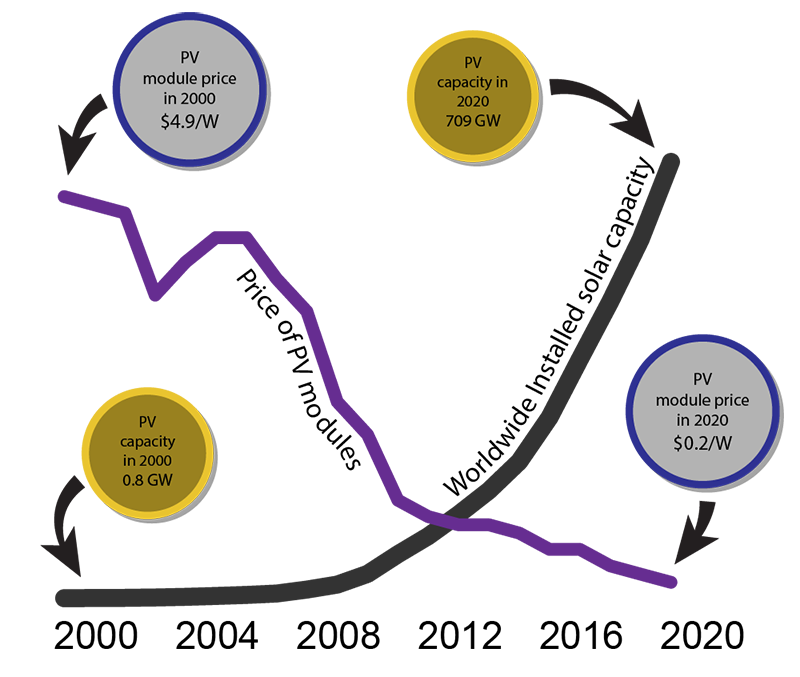Benefits of microgrids, and why do businesses need them?
From sustainability to economics, microgrids offer benefits for many businesses.
By Aytek Yuksel, Content Marketing Leader - Power Systems

A microgrid is a small electricity grid where electricity is produced, distributed and consumed. Microgrids can be independent from the main grid or connected to it. They can be large enough to serve an entire island, but small scale microgrids serving a single campus or industrial facility also exist.
Three factors have made microgrids an increasingly popular option within the power generation eco-system.
First, the trend of deregulation that energy markets have experienced in many countries has resulted in options and opportunities for electricity consumers. In the past, the owners of local generation resources may have faced steep administrative requirements. In many cases, interconnecting these resources to the main grid would not have been allowed at all. Or, the electricity tariff structure was such that there was no incentive for consumers to invest in such resources. Today’s regulatory environment is far more favorable to owning and operating non-utility assets. In the United States, for example, the Federal Energy Regulatory Commission now requires transmission grid operators to open their markets to the owners of energy storage resources located on microgrids.

Second, wind turbines, solar panels and energy storage systems have become far more affordable than they were in the past. In the case of solar panels, their price has dropped off a cliff, decreasing by a factor of almost 10 in the past 15 years.
Finally, advances in intelligent grid management software, controls systems, power electronics and other electrical components have made it possible to build, operate and maintain a small-scale grid without a large staff, and with a degree of flexibility not possible on a large-scale grid.
As a result, microgrids are within reach of many companies and institutions who want to benefit economically from operating their own generation, or to be more sustainable by using renewable resources, or have a more reliable and resilient system than grid-only supply.
Sustainability oriented benefits of microgrids
Many organizations install a microgrid in order to enable the integration of solar and wind power to their energy mix.
In the era of looming climate change, sustainability and corporate social responsibility are driving factors. With each year that passes, more and more organizations seek to embrace renewables in greater quantities. Often this is not possible without a microgrid.
On their own, solar arrays and wind turbines help to cut down emissions from electrical generation. Their intermittency, however, limits their effectiveness. At times they may provide more power than needed. At other times, not enough or none at all. Integrating intermittent resources in a microgrid along with energy storage and a firm generation resources is often the easiest way to maximize the usefulness of solar and wind assets. The other way is to interconnect solar and wind assets to the main grid and receive a payment in return for the excess power. This simply shifts the problem of balancing intermittent resources onto the main grid operator. The abundance of solar systems in many parts of the world however has resulted in grid operators being reluctant to accept excess power. The alternative, building a microgrid, does not require the authorization of the main grid operator.
Economic benefits of microgrids
Microgrids grant their owner a great deal of flexibility in optimizing their energy costs.
At any given time, multiple resources may be available on a microgrid to meet the electric demand coming from the microgrid’s consumers. These resources may include solar and wind resources, diesel fired generators, natural gas fired generators, energy storage, an interconnection to the main power grid, and maybe even demand response resources or fuel cells. (Demand respond resources are electric loads that can be turned off on demand. If your utility pays you to turn off your AC when asked to do so, then you are part of a demand response resource). Using the cheapest resource at any time and actively anticipating future load and generation inevitably leads to significant savings. Microgrids can ensure their owner spends the least amount possible on electricity, while ensuring continuity of supply.
Additionally, smart microgrids can also reduce the amount of investment needed in generation assets as well as reduce the cost of maintaining them. For example, an island microgrid might require a set of six generators to be online or available at all times, although only five usually operate. The sixth generator is simply present in case of demand peaks. The presence of an energy storage system effectively connected to the same microgrid can eliminate the need for this sixth generator. The energy storage takes care of the demand peaks.
Resiliency benefits of microgrids
No main grid is immune from power outages or shortages. For critical facilities such as military bases and hospital campuses, operating a microgrid is an insurance against grid outages. This is also the case for industrial facilities which may not be critical, but stand to lose economically from a temporary interruption or loss of electric power.
In some cases, microgrids actually improve the resiliency of the local grid as well. One way microgrids can do this is by providing black-start service to the main grid in the event of a main grid collapse—basically, generators located on the microgrid provide electricity to help restart large nearby power plants. Microgrids also support the main grid in an indirect way. If extra load is catered for locally on a microgrid, the main grid is less likely to require upgrades to cope with an area’s overall increased load.
Cummins' involvement in microgrids
Cummins is a leading provider of diesel and natural gas power generators, digital solutions and control systems; and has partnered with businesses ranging from greenhouses to healthcare facilities in their efforts to build microgrids. Recently, Cummins’ investments in energy storage and advanced microgrid control technologies has boosted its capability to provide critical microgrid components, and deliver complete microgrids tailored for each business’ unique needs.
Sign up below for Energy IQ to receive energy focused insights in markets ranging from data centers and healthcare facilities, to schools and manufacturing facilities, and everything beyond.
Interested in more on microgrids? You might also like:
Author Profiles

Aytek Yuksel, Content Marketing Leader - Power Systems
Aytek is a marketing leader at Cummins, focusing on technology and thought leadership. Since joining in 2008, he has held various marketing roles and now shares insights on markets, technologies, and energy transition. Aytek lives in Minneapolis with his wife and two kids.
Related Tags